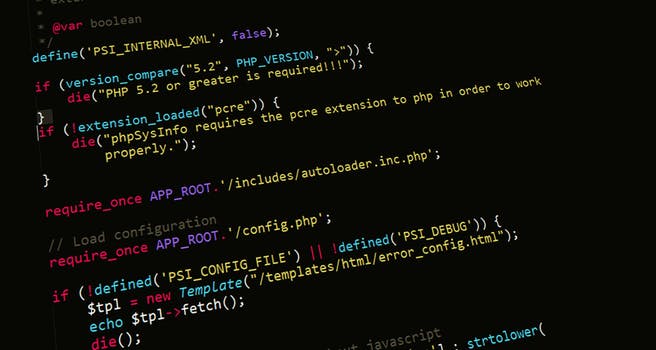TheDeveloperBlog.com
C-Sharp | Java | Python | Swift | GO | WPF | Ruby | Scala | F# | JavaScript | SQL | PHP | Angular | HTML
Python Set Examples
Use sets, set syntax and set methods. A set is similar to a dictionary but has no values.Then: We use len(), in and not-in to test the set. It has just 3 elements, despite specifying 5 strings.
Tip: When the set is initialized, duplicate values are removed. As with a dictionary, no 2 keys can have the same value.
In: The set allows the in-keyword. This returns true or false depending on whether the item exists.
InPython program that creates set
# Create a set.
items = {"arrow", "spear", "arrow", "arrow", "rock"}
# Print set.
print(items)
print(len(items))
# Use in-keyword.
if "rock" in items:
print("Rock exists")
# Use not-in keywords.
if "clock" not in items:
print("Cloak not found")
Output
{'spear', 'arrow', 'rock'}
3
Rock exists
Cloak not found
Tip: This is a good approach if you don't know beforehand what elements are to be added.
Empty: We use set() to create an empty set. We cannot use empty curly brackets as they indicate an empty dictionary, not set.
Python program that adds, discards, removes
# An empty set.
items = set()
# Add three strings.
items.add("cat")
items.add("dog")
items.add("gerbil")
print(items)
Output
{'gerbil', 'dog', 'cat'}
Integers: A set can contain integers, strings, or any type of elements that can be hashed.
Python program that creates set from list
# Create a set from this list.
# ... Duplicates are ignored.
numbers = set([10, 20, 20, 30, 40, 50])
print(numbers)
Output
{40, 10, 20, 50, 30}
Here: In this program, we introduce two sets. The method results depend on the numbers in the sets.
Is subset: This returns true in the program because numbers2 is a subset of numbers1.
Is superset: This method also returns true in this program. Numbers1 is a superset of numbers2.
Intersection: This method returns a new set that contains just the shared numbers. Other values are omitted.
Python program that uses set methods
numbers1 = {1, 3, 5, 7}
numbers2 = {1, 3}
# Is subset.
if numbers2.issubset(numbers1):
print("Is a subset")
# Is superset.
if numbers1.issuperset(numbers2):
print("Is a superset")
# Intersection of the two sets.
print(numbers1.intersection(numbers2))
Output
Is a subset
Is a superset
{1, 3}
Here: In the program, the sets each contained a 3, but the union method returns a set with just one 3.
Python program that unions two sets
# Two sets.
set1 = {1, 2, 3}
set2 = {6, 5, 4, 3}
# Union the sets.
set3 = set1.union(set2)
print(set3)
Output
{1, 2, 3, 4, 5, 6}
Tip: Subtracting sets is not something I do every day. For this reason, I would prefer difference() to make the operation explicit.
Result: When we subtract set "b" from set "a", the string "connecticut" is removed. The other strings remain.
And: When we subtract set "a" from set "b", the string "connecticut" is also removed. The other two strings from "b" remain.
Python program that subtracts sets
a = {"new york", "connecticut", "new jersey"}
b = {"connecticut", "pennsylvania", "maine"}
# Subtract.
c = a - b
print(c)
# Difference.
c = a.difference(b)
print(c)
# Subtract in opposite order.
c = b - a
print(c)
# Difference in opposite order.
c = b.difference(a)
print(c)
Output
{'new jersey', 'new york'}
{'new jersey', 'new york'}
{'pennsylvania', 'maine'}
{'pennsylvania', 'maine'}
So: To safely use remove(), you may need to use the in-operator beforehand. Discard meanwhile does not need this step.
Python program that uses discard, remove
animals = {"cat", "dog", "parrot", "walrus"}
print(animals)
# Discard nonexistent element, nothing happens.
animals.discard("zebra")
print(animals)
# Discard element that exists.
animals.discard("cat")
print(animals)
# Remove element that exists.
animals.remove("parrot")
print(animals)
# Remove causes an error if the element is not found.
animals.remove("buffalo")
Output
{'walrus', 'dog', 'parrot', 'cat'}
{'walrus', 'dog', 'parrot', 'cat'}
{'walrus', 'dog', 'parrot'}
{'walrus', 'dog'}
Traceback (most recent call last):
File "...", line 16, in <module>
animals.remove("buffalo")
KeyError: 'buffalo'
Python program that uses dictionary, set keys
# This dictionary contains key-value pairs.
dictionary = {"cat": 1, "dog": 2, "bird": 3}
print(dictionary)
# This set contains just the dictionary's keys.
keys = set(dictionary)
print(keys)
Output
{'bird': 3, 'dog': 2, 'cat': 1}
{'cat', 'bird', 'dog'}
Python program that uses set and map
values = {10, 20, 30}
# Multiply all values in the set by 100.
result = map(lambda x: x * 100, values)
# Display our results.
for value in result:
print(value)
Output
1000
2000
3000
Version 1: This version of the code uses the set collection. It uses the "in" operator on the set.
Version 2: Here we use the dictionary instead of the set. The dictionary has keys and values, but the program does not use the values.
Result: The set was consistently faster. The set lookup was performed about 4% faster than the dictionary lookup in the simple benchmark.
Python program that benchmarks set
import time
set1 = {"a", "b", "c", "z"}
dict1 = {"a": 1, "b": 2, "c": 3, "z": 4}
print(time.time())
# Version 1: use set.
i = 0
while i < 10000000:
a = "z" in set1
i += 1
print(time.time())
# Version 2: use dictionary.
i = 0
while i < 10000000:
a = "z" in dict1
i += 1
print(time.time())
Output
1346615677.741
1346615679.7 (Set = 1.959 s)
1346615681.732 (Dictionary = 2.032 s)
1346615958.731
1346615960.692 (Set = 1.961 s)
1346615962.736 (Dictionary = 2.044 s)
Overall: A dictionary is more powerful than a set. But in certain programs, a set is more graceful. It has methods such as intersection().
Related Links:
- Python global and nonlocal
- Python not: If Not True
- Python Convert Decimal Binary Octal and Hexadecimal
- Python Tkinter Scale
- Python Tkinter Scrollbar
- Python Tkinter Text
- Python History
- Python Number: random, float and divmod
- Python Tkinter Toplevel
- Python Tkinter Spinbox
- Python Tkinter PanedWindow
- Python Tkinter LabelFrame
- Python Tkinter MessageBox
- Python Website Blocker
- Python Console Programs: Input and Print
- Python Display Calendar
- Python Check Number Odd or Even
- Python readline Example: Read Next Line
- Python Anagram Find Method
- Python Any: Any Versus All, List Performance
- Python Filename With Date Example (date.today)
- Python Find String: index and count
- Python filter (Lambda Removes From List or Range)
- Python ASCII Value of Character
- Python Sum Example
- Python make simple Calculator
- Python Add Two Matrices
- Python Multiply Two Matrices
- Python SyntaxError (invalid syntax)
- Python Transpose Matrix
- Python Remove Punctuation from String
- Python Dictionary items() method with Examples
- Python Dictionary keys() method with Examples
- Python Textwrap Wrap Example
- Python Dictionary popitem() method with Examples
- Python Dictionary pop() method with Examples
- Python HTML: HTMLParser, Read Markup
- Python Tkinter Tutorial
- Python Array Examples
- Python ord, chr Built Ins
- Python Dictionary setdefault() method with Examples
- Python Dictionary update() method with Examples
- Python Dictionary values() method with Examples
- Python complex() function with Examples
- Python delattr() function with Examples
- Python dir() function with Examples
- Python divmod() function with Examples
- Python Loops
- Python for loop
- Python while loop
- Python enumerate() function with Examples
- Python break
- Python continue
- Python dict() function with Examples
- Python pass
- Python Strings
- Python Lists
- Python Tuples
- Python Sets
- Python Built-in Functions
- Python filter() function with Examples
- Python dict Keyword (Copy Dictionary)
- Python Dictionary Order Benchmark
- Python Dictionary String Key Performance
- Python 2D Array: Create 2D Array of Integers
- Python Divmod Examples, Modulo Operator
- bin() in Python | Python bin() Function with Examples
- Python Oops Concept
- Python Object Classes
- Python Constructors
- Python hash() function with Examples
- Python Pandas | Python Pandas Tutorial
- Python Class Examples: Init and Self
- Python help() function with Examples
- Python IndentationError (unexpected indent)
- Python Index and Count (Search List)
- Python min() function with Examples
- Python classmethod and staticmethod Use
- Python set() function with Examples
- Python hex() function with Examples
- Python id() function with Examples
- Python sorted() function with Examples
- Python next() function with Examples
- Python Compound Interest
- Python List insert() method with Examples
- Python Datetime Methods: Date, Timedelta
- Python setattr() function with Examples
- Python 2D List Examples
- Python Pandas Data operations
- Python Def Methods and Arguments (callable)
- Python slice() function with Examples
- Python Remove HTML Tags
- Python input() function with Examples
- Python enumerate (For Index, Element)
- Python Display the multiplication Table
- Python int() function with Examples
- Python Error: Try, Except and Raise
- Python isinstance() function with Examples
- Python oct() function with Examples
- Python startswith, endswith Examples
- Python List append() method with Examples
- Python NumPy Examples (array, random, arange)
- Python Replace Example
- Python List clear() method with Examples
- Python List copy() method with Examples
- Python Lower Dictionary: String Performance
- Python Lower and Upper: Capitalize String
- Python Dictionary Examples
- Python map Examples
- Python Len (String Length)
- Python Padding Examples: ljust, rjust
- Python Type: setattr and getattr Examples
- Python String List Examples
- Python String
- Python Remove Duplicates From List
- Python If Examples: Elif, Else
- Python Programs | Python Programming Examples
- Python List count() method with Examples
- Python List extend() method with Examples
- Python List index() method with Examples
- Python List pop() method with Examples
- Python Palindrome Method: Detect Words, Sentences
- Python Path: os.path Examples
- Python List remove() method with Examples
- Python List reverse() method with Examples
- Top 50+ Python Interview Questions (2021)
- Python List sort() method with Examples
- Python sort word in Alphabetic Order
- abs() in Python | Python abs() Function with Examples
- Python String | encode() method with Examples
- all() in Python | Python all() Function with Examples
- any() in Python | Python any() Function with Examples
- Python Built In Functions
- ascii() in Python | Python ascii() Function with Examples
- Python bytes, bytearray Examples (memoryview)
- bool() in Python | Python bool() Function with Examples
- bytearray() in Python | Python bytearray() Function with Examples
- Python Caesar Cipher
- bytes() in Python | Python bytes() Function with Examples
- Python Sum of Natural Numbers
- callable() in Python | Python callable() Function with Examples
- Python Set add() method with Examples
- Python Set discard() method with Examples
- Python Set pop() method with Examples
- Python math.floor, import math Examples
- Python Return Keyword (Return Multiple Values)
- Python while Loop Examples
- Python Math Examples
- Python Reverse String
- Python max, min Examples
- Python pass Statement
- Python Set remove() method with Examples
- Python Dictionary
- Python Functions
- Python String | capitalize() method with Examples
- Python String | casefold() method with Examples
- Python re.sub, subn Methods
- Python subprocess Examples: subprocess.run
- Python Tkinter Checkbutton
- Python Tkinter Entry
- Python String | center() method with Examples
- Python Substring Examples
- Python pow Example, Power Operator
- Python Lambda
- Python Files I/O
- Python Modules
- Python String | count() method with Examples
- Python String | endswith() method with Examples
- Python String | expandtabs() method with Examples
- Python Prime Number Method
- Python String | find() method with Examples
- Python String | format() method with Examples
- Python String | index() method with Examples
- Python String | isalnum() method with Examples
- Python String | isalpha() method with Examples
- Python String | isdecimal() method with Examples
- Python Pandas Sorting
- Python String | isdigit() method with Examples
- Python Convert Types
- Python String | isidentifier() method with Examples
- Python Pandas Add column to DataFrame columns
- Python String | islower() method with Examples
- Python Pandas Reading Files
- Python Right String Part
- Python IOError Fix, os.path.exists
- Python Punctuation and Whitespace (string.punctuation)
- Python isalnum: String Is Alphanumeric
- Python Pandas Series
- Python Pandas DataFrame
- Python Recursion Example
- Python ROT13 Method
- Python StringIO Examples and Benchmark
- Python Import Syntax Examples: Modules, NameError
- Python in Keyword
- Python iter Example: next
- Python Round Up and Down (Math Round)
- Python List Comprehension
- Python Collection Module
- Python Math Module
- Python OS Module
- Python Random Module
- Python Statistics Module
- Python String Equals: casefold
- Python Sys Module
- Top 10 Python IDEs | Python IDEs
- Python Arrays
- Python Magic Method
- Python Stack and Queue
- Python MySQL Environment Setup
- Python MySQL Database Connection
- Python MySQL Creating New Database
- Python MySQL Creating Tables
- Python Word Count Method (re.findall)
- Python String Literal: F, R Strings
- Python MySQL Update Operation
- Python MySQL Join Operation
- Python Armstrong Number
- Learn Python Tutorial
- Python Factorial Number using Recursion
- Python Features
- Python Comments
- Python if else
- Python Translate and Maketrans Examples
- Python Website Blocker | Building Python Script
- Python Itertools Module: Cycle and Repeat
- Python Operators
- Python Int Example
- Python join Example: Combine Strings From List
- Python Read CSV File
- Python Write CSV File
- Python Read Excel File
- Python Write Excel File
- Python json: Import JSON, load and dumps
- Python Lambda Expressions
- Python Print the Fibonacci sequence
- Python format Example (Format Literal)
- Python Namedtuple Example
- Python SciPy Tutorial
- Python Applications
- Python KeyError Fix: Use Dictionary get
- Python Resize List: Slice and Append
- Python String | translate() method with Examples
- Python Copy List (Slice Entire List)
- Python None: TypeError, NoneType Has No Length
- Python MySQL Performing Transactions
- Python String | isnumeric() method with Examples
- Python MongoDB Example
- Python String | isprintable() method with Examples
- Python Tkinter Canvas
- Python String | isspace() method with Examples
- Python Tkinter Frame
- Python Tkinter Label
- Python Tkinter Listbox
- Python String | istitle() method with Examples
- Python Website Blocker | Script Deployment on Linux
- Python Website Blocker | Script Deployment on Windows
- Python String | isupper() method with Examples
- Python String split() method with Examples
- Python Slice Examples: Start, Stop and Step
- Python String | join() method with Examples
- Python String | ljust() method with Examples
- Python Sort by File Size
- Python Arithmetic Operations
- Python String | lower() method with Examples
- Python Exception Handling | Python try except
- Python Date
- Python Regex | Regular Expression
- Python Sending Email using SMTP
- Python Command Line Arguments
- Python List Comprehension Examples
- Python Assert Keyword
- Python Set Examples
- Python Fibonacci Sequence
- Python Maze Pathfinding Example
- Python Memoize: Dictionary, functools.lru_cache
- Python Timeit, Repeat Examples
- Python Strip Examples
- Python asyncio Example: yield from asyncio.sleep
- Python String Between, Before and After Methods
- Python bool Use (Returns True or False)
- Python Counter Example
- Python frozenset: Immutable Sets
- Python Generator Examples: Yield, Expressions
- Python CSV: csv.reader and Sniffer
- Python globals, locals, vars and dir
- Python abs: Absolute Value
- Python gzip: Compression Examples
- Python Function Display Calendar
- Python Display Fibonacci Sequence Recursion
- Python String | lstrip() method with Examples
- Python del Operator (Remove at Index or Key)
- Python String | partition() method with Examples
- Python String | replace() method with Examples
- Python Zip Examples: Zip Objects
- Python String | rfind() method with Examples
- Python String | rindex() method with Examples
- Python String rjust() method with Examples
- Python String rpartition() method with Examples
- Python String rsplit() method with Examples
- Python Area Of Triangle
- Python Quadratic Equation
- Python swap two Variables
- Python Generate Random Number
- Python Convert Kilometers to Miles
- Python Convert Celsius to Fahrenheit
- Python Check Number Positive Negative or Zero
- Python Check Leap Year
- Python Check Prime Number
- Top 40 Python Pandas Interview Questions (2021)
- Python Check Armstrong Number
- Python SQLite Example
- Python Tkinter Button
- Python Find LCM
- Python Find HCF
- Python Tuple Examples
- Python String | rstrip() method with Examples
- Python String splitlines() method with Examples
- Python String | startswith() method with Examples
- Python String | swapcase() method with Examples
- Python Truncate String
- Python String | upper() method with Examples
- Python for: Loop Over String Characters
- Python String | zfill() method with Examples
- Python Sort Examples: Sorted List, Dictionary
- Python XML: Expat, StartElementHandler
- Python Urllib Usage: Urlopen, UrlParse
- Python File Handling (with open, write)
- Python Example
- Python variables
- Python Random Numbers: randint, random.choice
- Python assert, O Option
- Python Data Types
- Python keywords
- Python literals
- Python MySQL Insert Operation
- Python MySQL Read Operation
- Python ascii Example
- Python ASCII Table Generator: chr
- Python Range: For Loop, Create List From Range
- Python re.match Performance
- Python re.match, search Examples
- Python Tkinter Menubutton
- Python Tkinter Menu
- Python Tkinter Message
- Python Tkinter Radiobutton
- Python List Examples
- Python Split String Examples